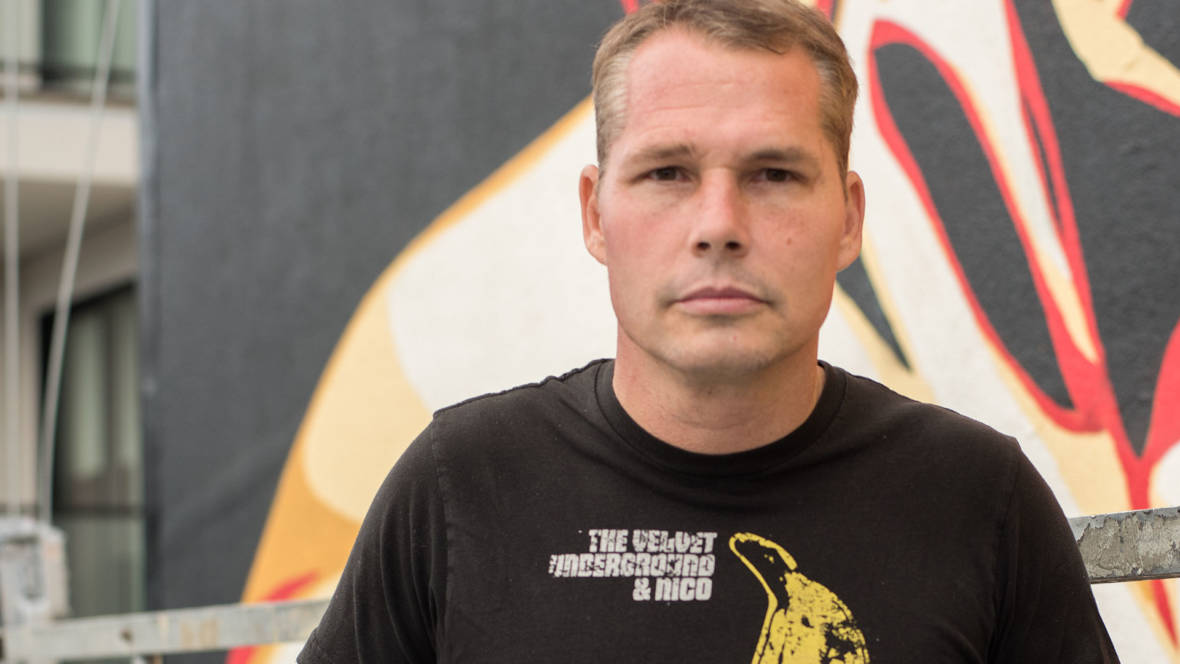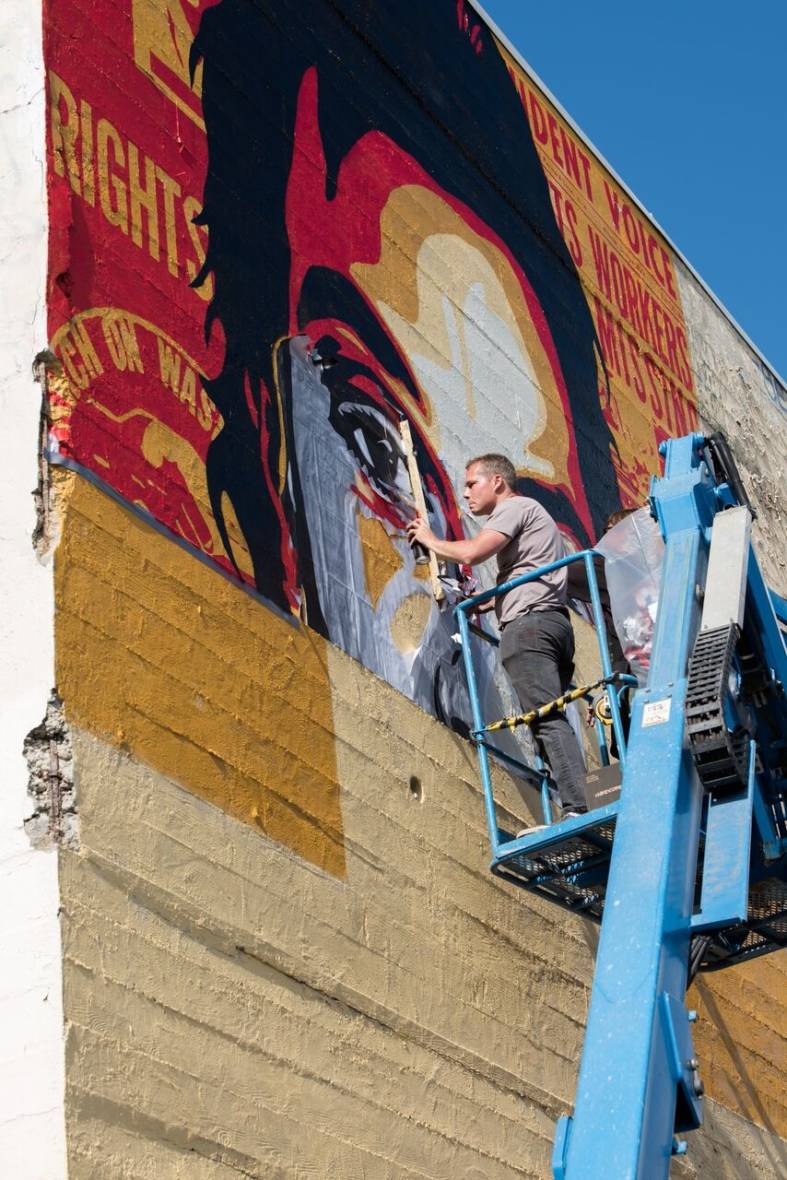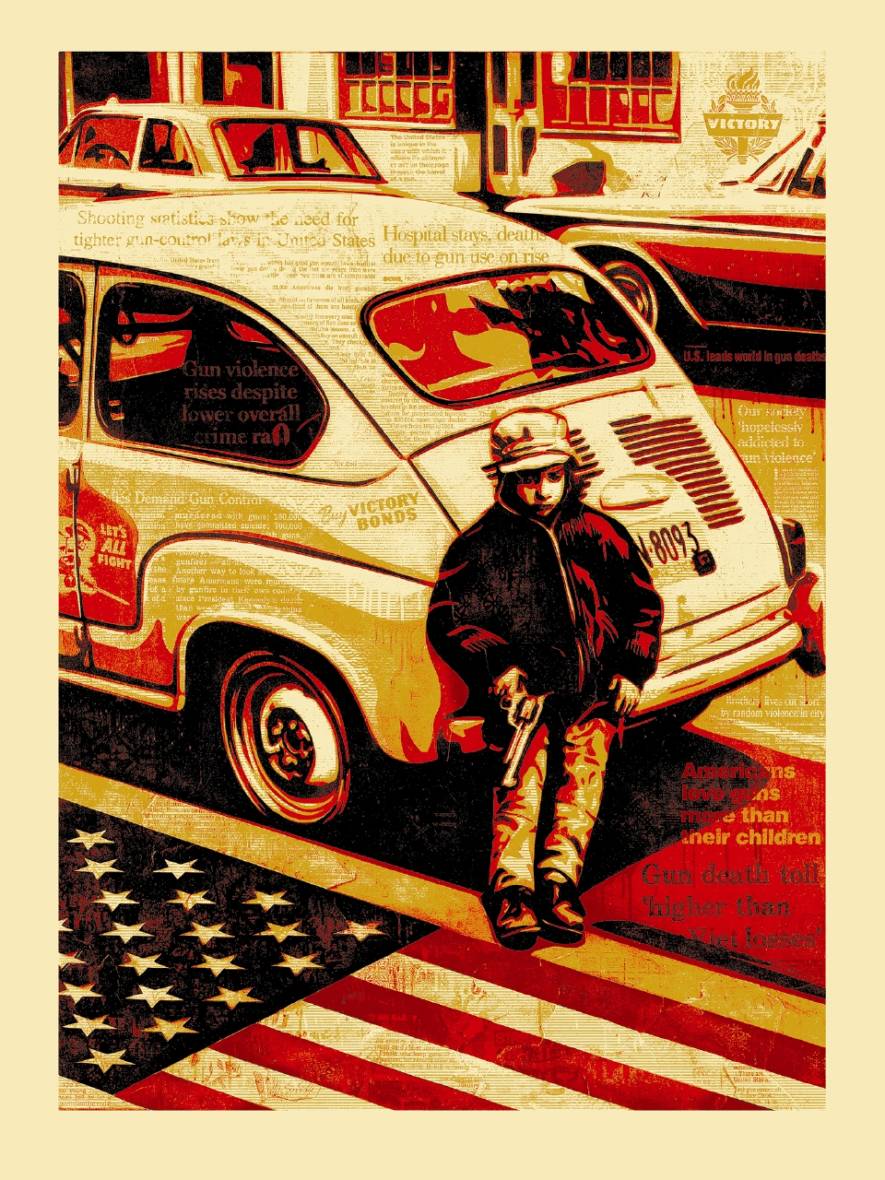In 2008, much of America welcomed longtime guerrilla artist Shepard Fairey’s work into their homes and onto the bumpers of their cars. Fairey’s iconic ‘HOPE’ poster of then-nominee Barack Obama gazing thoughtfully toward a new future in red, white and blue became symbolic for a new America — one which signaled a much-welcomed change for many.
This election year, however, holds even more collective breath-holding. There is no controversy-free candidate, no beacon of light in the midst of the nation’s ever-present problems, and from Fairey, no inspiring campaign poster motivating Americans to vote. For this election cycle, Fairey is instead focusing on issues of voting rights, childhood poverty, gun culture, workers rights and mass incarceration with his current body of work, American Civics, which includes two brand new public murals in San Francisco and an exhibition at the San Francisco Art Exchange. The work is a collaborative project between Fairey and the estate of photographer Jim Marshall, and includes Shepard’s signature serigraph interpretations of Marshall’s work as well as a collection of original photographs from Marshall’s estate.
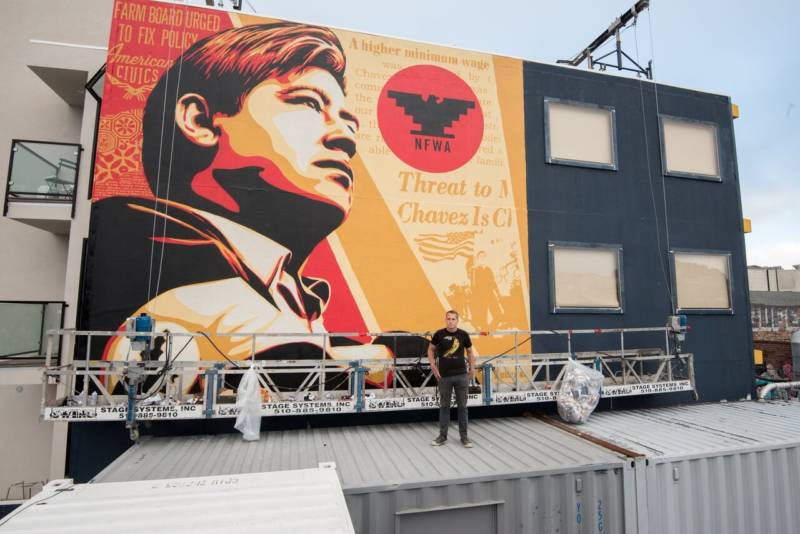
“Jim liked my work and had mentioned the possibility of collaborating with me before he died,” says Fairey of the prolific photographer, who is primarily known for portraits of John Coltrane, Jimi Hendrix, Janis Joplin, the Beatles and other musicians. “The idea involved doing something around social justice; I didn’t realize how much work in that arena he had done. When I was able to look through the archives and we talked about issues we all cared about, I was able to find things that I thought would really visually embody those concepts.”
Among the photographs Fairey used for the project — as well as two large murals in San Francisco, completed in mid-August — are those of labor organizer Cesar Chavez and Fannie Lee Chaney. Marshall photographed Chaney in 1964 as the FBI informed her that her African-American son, James Chaney, and two of his friends were killed by the Ku Klux Klan for registering black voters.
“The voting rights suppression that’s happening right now and also people of color being killed by the police made the Fannie Lee Chaney image very relevant to me,” says Fairey.
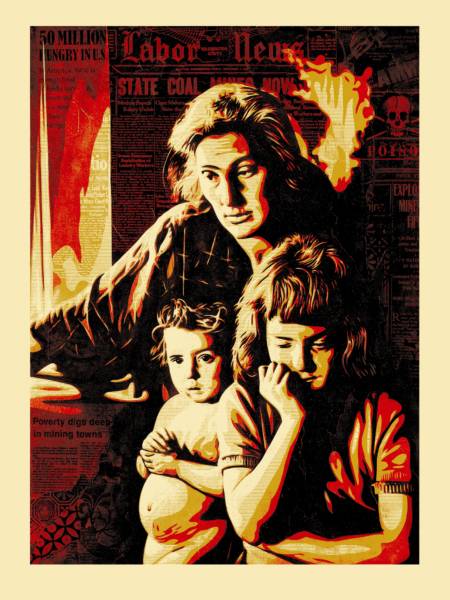
The decision to create a mural of Cesar Chavez in San Francisco was a natural one for Los Angeles-based Fairey, who hopes to illuminate the importance of workers who provide valuable services in the city, along with their right to live with dignity during a time of skyrocketing costs of living in the Bay Area. The Chavez mural in Hayes Valley drew United Farm Workers Foundation Executive Director Diana Tellefson Torres and her colleagues to San Francisco from their headquarters in Los Angeles to attend the opening of American Civics. A percentage of the proceeds from the show’s sales will be donated to the organization; ten percent of sales from other prints will benefit the NAACP’s Legal Defense Fund, the Caliber Foundation, #cut50, and No Kid Hungry; organizations that Fairey and the Jim Marshall estate selected together.
